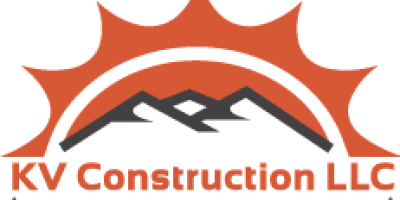Vinyl Siding vs. Fiber Cement: Why We Choose Fiber Cement
More homeowners are consulting siding contractors in Seattle for fiber cement siding, with about 20 percent of recently built homes featuring this durable exterior option.
Fiber cement proves to be a better siding choice over vinyl due to its durability and high returns in investment. It can make your home’s exterior have a more natural feel for ages. To make you understand why fiber cement is superior to vinyl as a siding material, here’s a detailed guide:
Basic Comparison
As a siding material, fiber cement comprises a mixture of portland cement and wood pulp formed into long shingles or boards. You can have it installed in your home with nails.Sidings made of fiber cement are often referred to as “Hardie board” or “Hardiplank” to reflect the popular
fiber cement siding brand, James Hardie. The planks mimic the appearance of traditional wood siding, thus an excellent choice for Seattle Washington historic homes. You can also install them in the same way as wood siding.
On the other hand, vinyl (made from PVC) is a firm plastic material that can contract and expand as the surrounding temperatures change. It’s lighter than fiber cement and a cheaper alternative to siding in residential properties. Unlike fiber cement siding, vinyl sidings are securely fixed with an underlayment on the wall to allow them to contract and expand.
Siding Thickness And Texture
Fiber cement sidings are relatively thicker than vinyl ones and are available in different thickness levels. Their thickness range from 5/16-inches to ¼-inches.Vinyl sidings are thinner than fiber cement ones since they are 0.040 to 0.046-inch thick. They are about 2 ½ times smaller in thickness than fiber cement sidings. Once installed with insulation or foam sheathing, it’s quite difficult to tell the siding’s total thickness.
Since sidings made of fiber cement are thicker, they have a deep texture compared to vinyl ones. Their thickness also allows them to have a uniform embossing that adds curb appeal to your home.
Vinyl sidings are too thin to have a deep texture found on fiber cement sidings. They have a smooth, artificial feel that wouldn’t be ideal for a historic home.
Combustibility
Fiber cement planks are highly resistant to fire due to their high cement content. Even more, 90 percent of their raw materials have a high resistance to fires. Besides fire, the planks can withstand harsh weather conditions, airborne debris, seasonal changes, birds, and pests.Sidings made of PVC are more prone to extreme heat and fire than those made of fiber cement. Though manufacturers may treat them with fire retardants, they can still catch fire. The sidings can easily warp when exposed to heat and pose put your home at risk of damage.
James Hardie fiber cement planks are ideal for exteriors if you live in an area that’s prone to wildfires. You can also install them on walls lying next to a barbecue grill without worrying about damage. On the other hand, vinyl sidings melt when exposed to concentrated light from window panes or mirrors.
Return On Investment
Repairing or replacing sidings can be costly, time-consuming, and labor-intensive. To save on resources, it’s wise to choose a siding that will save you money over time. Fiber cement sidings may be costly to buy and install but can protect your exteriors for years.Vinyl siding costs are quite affordable than those of fiber cement planks. However, a house with this type of siding will have a lower resale value.
Fiber cement sidings are ideal for remodeling projects since they have a higher return on investment. You’ll recoup the money spent on buying and installing the planks when selling your home. That’s because most buyers’ interests are in homes with natural-looking upgrades over artificial ones.
Remodeling a historic home with vinyl sidings may be a bad idea if you’re planning to sell it. Buyers prefer a historic home with accurate building materials. Vinyl may even be seen as a cheap, inferior siding choice by potential buyers who would undervalue your property.
Durability
A durable siding will protect your home’s exterior from
water damage, fire damage, or collision damage. It reduces the need for costly repairs or replacements on your exterior walls. Fiber cement is a way more durable siding material than vinyl that you should consider for your exterior walls.Fiber cement planks don’t melt or warp when subjected to extreme conditions, unlike vinyl ones. They can withstand pressure and resist UV light, fire, and water.
Vinyl and cedar siding can easily tear up when hit with a shovel or lawnmower. They can also crack in low temperatures and warp in extremely high temperatures. You can’t have them near your barbecue grill or areas around your house with high heat.
Why Consider Fiber Cement Siding?
Fiber cement planks are the only type of sidings that combine the look of natural wood with top-notch masonry performance. They require minimal upkeep and are resistant to cold, pests, rot, and fire, unlike vinyl sidings. Fiber cement sidings also come in different designs and color/texture options to suit your preferences.Most architects recommend this type of siding since it holds down siding costs without compromising your home’s aesthetics. Vinyl sidings may give you the look and feel of a modern home, but they can’t protect your exterior walls from damage. While it may be tempting to go for a cheaper siding option (vinyl), your home risks having a low resale value.
Get A Fiber Cement Siding Installed Today
Choose a fiber cement siding if you’re looking for a more durable and thicker siding for your home. Vinyl sidings may have an attractive price but prove costly when they warp or melt under cold or heat. Have fun getting fiber cement sidings for your home’s exterior walls.Count on
KV construction LLC for home improvements, windows, and siding installation in Seattle WA. We use high-quality siding products sourced from James Hardie Siding with product and workmanship warranties. Be sure to
schedule a siding installation with us today.


